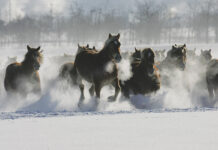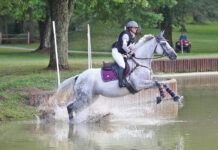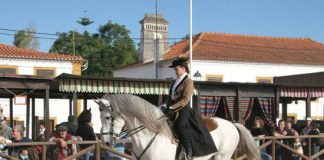When Major Villars Lunn bought a chestnut mare with a white blanket coat pattern from Mr. Flaeb, the local butcher, he likely had no idea he was about to create the beloved spotted horse of Denmark.
The mare, named Flaebehoppen (translation: “Flaeb’s mare”), moved to her new home on Lunn’s Knabstrupgaard Manor in Nordsealand, Denmark. Her next foal, Flaebehingsten, a loudly colored colt, became Lunn’s foundation stallion. Through the crossings of Flaebehoppen and Flaebehingsten with several of Lunn’s quality horses, the Knabstrupper breed was born.
With the breed registry established in 1812, the Knabstrupper is one of the oldest registered breeds in Europe. While the spotted horses enjoyed great popularity for half a century, it was not to last. By the 1870s, the problems of inbreeding began to surface due to the scarcity of quality breeding horses. Then, in 1891, a fire at Knabstrupgaard Manor killed nearly two dozen of Lunn’s best horses.
Through the mid-1900s, the breed continued to lose ground and might have been lost entirely if not for the efforts of a small group of dedicated breeders. One was Egemosegaard Farm, which sought to revitalize the breed in 1947, and breeder Frede Nielsen, who imported three Appaloosa stallions from the U.S. in 1971 to bring new blood to the Danish gene pool. Since then, the Knabstrupper has rebounded to about 2,000 horses in Scandinavia and elsewhere. The first U.S. Knabstrupper foal was born in 2002.
With bloodlines from the prehistoric spotted horses of what is now Spain, the Knabstrupper shares the same color genes as the Appaloosa. Coat patterns include the popular leopard, a solid white background covered with chestnut, bay or black spots. Blanket, snowcap and snowflake are other spot patterns found in the breed. “Few spot” horses have a mostly white coat but produce 100 percent spotted foals.
Three types of Knabstruppers have evolved, each with its own talents. The Baroque type excels as a carriage and dressage horse. The sport horse type, which has been developed by crosses with Danish Warmbloods and Trakehners, is also found in the dressage ring, as well as eventing and show jumping. The pony type has the willingness and people-loving personality to do anything asked by its young rider.







Pretty good info but you offer an out of date link ofr more information.
The American Knabstrupper Association has not been in existence for several years. So please take down the link to them, it only serves to confuse people. the modern links are dirctly to the mother organisation the KNN>